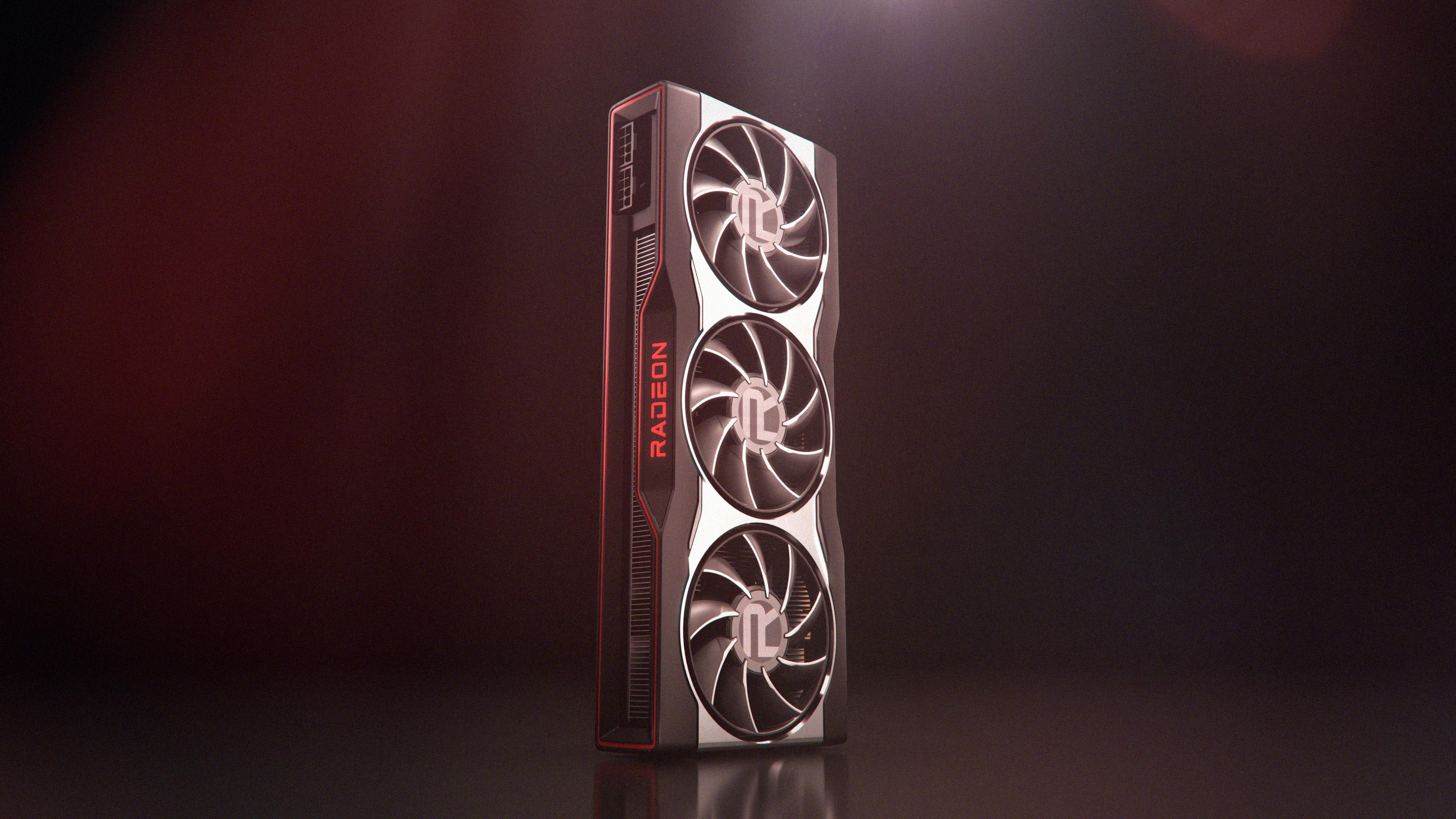A Linux update may have let slip AMD Big Navi's mammoth core specs
AMD's Sienna Cichlid and Navy Flounder GPU details for all to see.

The summer of leaks continues, this time with the attention turning to AMD's next-gen GPUs based on the RDNA 2 architecture, which we'll find out more about on October 28. An enterprising redditor (via Tom's Hardware) was digging around the Radeon Open Compute (ROCm) code and discovered what appears to be a specification list for two of AMD's next generation GPUs.
| Parameter | Sienna Cichlid | Navy Flounder |
| gc_num_se | 4 | 2 |
| gc_num_cu_per_sh | 10 | 10 |
| gc_num_sh_per_se | 2 | 2 |
| gc_num_rb_per_se | 4 | 4 |
| gc_num_tccs | 16 | 12 |
| gc_num_gprs | 1024 | 1024 |
| gc_num_max_gs_thds | 32 | 32 |
| gc_gs_table_depth | 32 | 32 |
| gc_gsprim_buff_depth | 1792 | 1792 |
| gc_double_offchip_lds_buffer | 1024 | 1024 |
| gc_wave_size | 32 | 32 |
| gc_max_waves_per_simd | 16 | 16 |
| gc_lds_size | 64 | 64 |
| num_sc_per_sh | 1 | 1 |
| num_packer_per_sc | 4 | 4 |
Details for two GPUs codenamed Sienna Cichlid (Navi 21, or Big Navi) and Navy Flounder (Navi 22 or 23) were revealed. Of most interest here is the fact that Big Navi does appear to confirm the rumours that it will be a 80 CU (Compute Unit) chip, while Navy Flounder appears to have 40 CUs. Multiply the top three numbers in the table to get the CU count. According to the document Big Navi will have a 256-bit memory bus, while Navy Flounder appears to have a 192-bit memory bus.
It's too early to say how these numbers relate to performance, or whether they're even accurate, but the general rumours are that Big Navi shouldn't be far off the performance of the Nvidia RTX 3080. If true that could make for some seriously interesting competition—something we haven't had for a few years now. We'll have to wait and see.
As for Navy Flounder, it appears to be a replacement of the Radeon RX 5700 XT, but using the newer RDNA 2 architecture, which supports real time ray tracing among other goodies. Obviously we have no indication of performance or pricing yet, but hopefully AMD can keep Nvidia honest all the way through the stack.
AMD still has just over a month to go before these cards are officially announced, but we'd have to assume that the underlying hardware won't change at this point—there simply isn't enough time to do so. Even so, you should still take these specs with a pinch of salt, as they aren't official, even if they appear to come from a legitimate source.
Keep up to date with the most important stories and the best deals, as picked by the PC Gamer team.
Alan has been writing about PC tech since before 3D graphics cards existed, and still vividly recalls having to fight with MS-DOS just to get games to load. He fondly remembers the killer combo of a Matrox Millenium and 3dfx Voodoo, and seeing Lara Croft in 3D for the first time. He's very glad hardware has advanced as much as it has though, and is particularly happy when putting the latest M.2 NVMe SSDs, AMD processors, and laptops through their paces. He has a long-lasting Magic: The Gathering obsession but limits this to MTG Arena these days.


